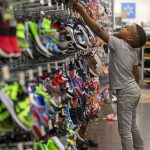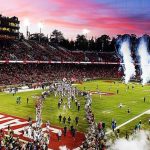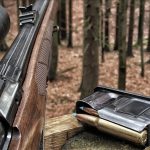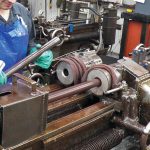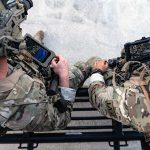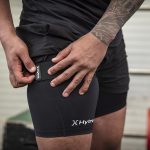The angst of the last month gave way to anxious optimism as Outdoor Retailer Winter Market opened its doors last week. Despite the buzz circulating around the industry since October about fears of a severe cutback in attendance on the part of retailers, the opening day of the bi-annual show in Salt Lake City still had a lot of positive energy.
Traffic was certainly down, but this was by no means a dead show. Exhibitors were definitely missing, but show management did an admirable job of working deals to fill space and give the Salt Palace a feeling of fullness many had not expected. Based on comments and feedback fielded by the editorial team at Sports Executive Weekly over the last month, many expected the show to be a ghost town, with empty aisles and a checkerboard floorplan of empty spaces and missing exhibitors.
Neither was the case.
There were clear signs around the show that the effects of the recession are being felt around the industry. While some retailers failed to show, most came with reduced teams and/or cut back on the days attended to spend less time out of the store. Exhibitors and sales rep groups also cut staff and rep attendance that also cut into the aisle traffic. There were definitely more west coast attendees flying in the first morning to save on the first night of hotel expenses. There were last minute rooms to be had in many hotels.
The resiliency of this market was clear on day one as the negative expectations quickly washed away as exhibitors greeted customers, friends connected with friends and those in attendance fueled a general sense of community that is not evident at most if not any other shows. Not a record-breaking day, but many people were commenting on how solid the floor traffic was in spite of the economy. The doom and gloom that many people expected did not fully materialize. Traffic was still clearly lighter than it has been in the past, but it was better than many expected.
The strong brands that maintain strong market leadership positions had solid appointment schedules for the first two days, at least, as retailers looked to solidify vendor relationships with the brands they expect will be top of mind with consumers. Most of the top-tier footwear and apparel brands were hosting crowds of retailers, while the hardgoods side of the business was a bit more challenged.
Though the aisles were not empty, they were not overflowing with retailer badges either. Some exhibitors estimated that as much as half their usual A-list customers made the trip, but that estimate was the extreme, not the norm.
The show at times took on the feel of a job fair, as well, as a huge number of recently released free agents moved from booth to booth or scouted the aisles for networking opportunities in hopes of landing a new gig. Based on feedback from vendors and recruiters on the floor, the prospect of adding talent is most likely a second quarter possibility as companies assess the impact of the large number of cutbacks made, the impact of those cutbacks, and the general health of the business.
Based on input from show management, the show lost a number of smaller brands that could not afford to make the investment in the current environment.
Some of the stronger brands added more space, while a number of new or former exhibitors jumped at the opportunity to grab space. Columbia was back with a solid presence and Nike ACG was back in, pretty close to their franchise spot from years past. The show is definitely gaining steam with the running community and picked up new exhibitors in that end of the show, as well. American Sporting Goods made their first show, taking a good size pad to show off the Ryka, Avia and Nevados brands.




